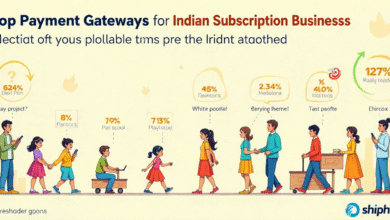Should You Invest in NCDEX Turmeric or Mid Cap Mutual Funds? A Comparative Guide

Investment Characteristics of NCDEX Turmeric Trading
NCDEX turmeric futures represent one of the most actively traded spice commodities in India’s agricultural derivatives market. Turmeric trading through NCDEX involves futures contracts with specific quality parameters, delivery specifications, and seasonal price patterns. Investors closely monitor MCX live rates and NCDEX pricing to understand broader commodity market trends. Turmeric prices are influenced by monsoon patterns, cultivation areas, export demand, and processing industry requirements. The commodity exhibits significant seasonal volatility, with prices typically rising during festival seasons and harvest periods.
Mid Cap Mutual Funds: Growth Potential and Characteristics
Mid cap mutual funds invest in companies with medium market capitalizations, typically ranging between large caps and small caps in terms of market value. These funds offer exposure to businesses with established operations but significant growth potential. TATA mutual fund mid cap schemes exemplify this category, providing investors with professionally managed portfolios of mid-sized companies. Mid cap funds historically deliver higher returns than large cap funds over longer investment horizons, though they carry increased volatility and risk compared to blue-chip investments.
Risk Assessment and Volatility Patterns
Turmeric trading through NCDEX exposes investors to agricultural commodity risks including weather dependency, crop diseases, government policy changes, and global spice market fluctuations. The leverage inherent in futures trading amplifies both gains and losses, making position sizing crucial. Daily MCX live rates movements can result in substantial mark-to-market fluctuations requiring margin maintenance. Mid cap mutual funds carry equity market risks, including company-specific risks, sector rotation impacts, and economic cycle sensitivity. However, diversification across multiple mid cap stocks reduces individual company risk exposure.
Investment Horizon and Holding Period Considerations
NCDEX turmeric contracts have specific expiry dates, typically ranging from one to several months, requiring active position management and rollover decisions. Successful commodity trading often involves shorter-term strategies based on seasonal trends and technical analysis. The MCX live rates provide real-time pricing information essential for timing entry and exit decisions. Mid cap mutual funds are designed for longer investment horizons, typically three to five years or more, allowing companies time to execute growth strategies and market cycles to play out favorably.
Capital Requirements and Accessibility
Turmeric futures trading requires margin deposits that vary based on contract size and volatility levels. The minimum investment depends on lot sizes and margin requirements set by the exchange. Active traders need substantial capital to maintain positions through adverse price movements. Mid cap mutual funds, including TATA mutual fund schemes, offer systematic investment plans starting from minimal monthly amounts. The SIP mechanism allows gradual portfolio building without requiring substantial initial capital.
Market Timing and Active Management Demands
NCDEX turmeric trading demands continuous market monitoring, as commodity prices respond quickly to weather reports, government announcements, and global market developments. Successful traders develop expertise in fundamental analysis, technical indicators, and seasonal patterns. The MCX live rates serve as reference points for broader commodity market sentiment. Mid cap mutual funds require less active involvement from investors, as professional fund managers handle security selection, timing decisions, and portfolio rebalancing based on market conditions and fund objectives.
Diversification Benefits and Portfolio Integration
Turmeric futures provide portfolio diversification benefits through commodity exposure, potentially offering inflation protection and low correlation with traditional asset classes. However, concentration in a single commodity creates specific risk exposures related to that particular market. Mid cap mutual funds offer diversification across multiple companies and sectors within the mid cap universe. TATA mutual fund mid cap schemes typically hold 40-60 stocks across various industries, reducing concentration risk while maintaining growth potential.
Tax Implications and Treatment
Commodity trading profits and losses receive different tax treatment compared to mutual fund investments. Turmeric futures trading profits are subject to speculative business income tax rates, while losses can be offset against other speculative gains. The tax implications vary based on holding periods and trading frequency. Mid cap mutual fund investments benefit from equity taxation rules, with long-term capital gains above specified thresholds subject to favorable tax rates and short-term gains taxed at applicable rates.
Professional Expertise and Knowledge Requirements
Successful turmeric trading requires specialized knowledge of agricultural markets, understanding of seasonal patterns, weather impact analysis, and technical trading skills. Traders must stay informed about cultivation trends, export policies, and processing industry developments. The MCX live rates provide pricing information, but interpretation requires market expertise. Mid cap mutual fund investments benefit from professional fund management, where experienced managers conduct research, analysis, and portfolio construction. Investors need basic understanding of fund categories, performance metrics, and risk factors.
Liquidity and Exit Flexibility
NCDEX turmeric contracts offer good liquidity during trading hours, allowing position adjustments based on market conditions. However, futures contracts have expiry dates requiring position closure or rollover decisions. Market liquidity can vary based on contract months and market conditions. Mid cap mutual funds provide redemption flexibility with NAV-based pricing, though they may have exit loads for early redemptions. The TATA mutual fund schemes typically offer daily liquidity based on the previous day’s NAV, providing predictable exit mechanisms.
Long-term Wealth Creation Potential
Turmeric trading can generate significant returns during favorable market conditions, but the cyclical nature of commodity markets and leverage risks make consistent wealth creation challenging. The commodity exposure provides inflation hedging benefits but requires active risk management. Mid cap mutual funds offer long-term wealth creation potential through exposure to growing companies with expansion opportunities. Historical data suggests mid cap funds can deliver attractive returns over extended periods, though with higher volatility than large cap alternatives.





One Comment